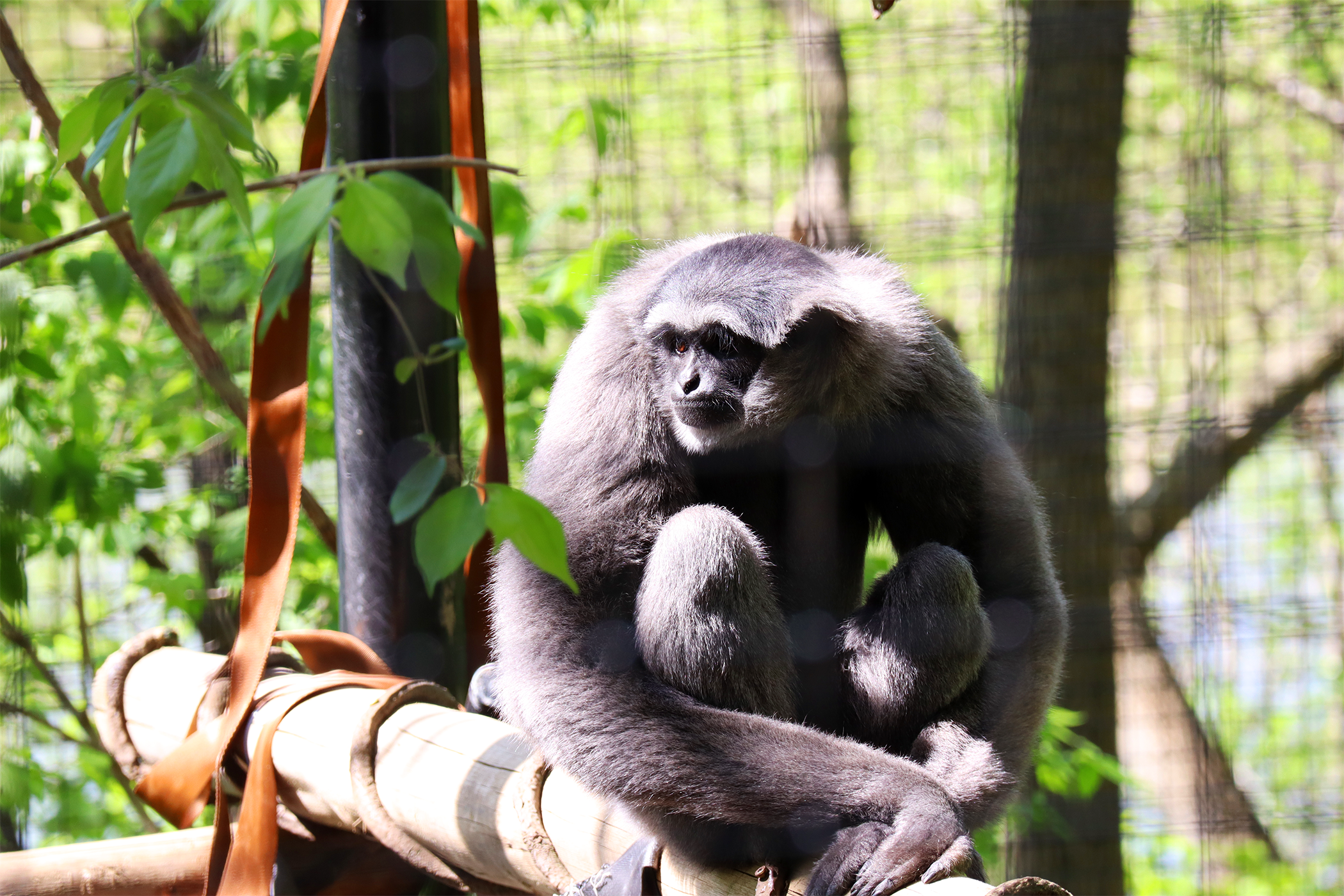I LIVE IN ASIA
Javan gibbons are native to rainforests on the Indonesian island of Java where they spend the majority of their time living up in the trees.
I AM AN OMNIVORE
A Javan gibbon’s diets consists mostly of fruits and leaves. On occasion they will consume nectar, grubs and even bird eggs. Most of their foraging is done in the upper forest canopy.
JAVAN GIBBONS ARE SOCIAL
Javan gibbons typically live in small family groups made of one male and one female, in addition to their juvenile offspring. Younger gibbons will leave the family group between the ages of 8-10.
SINGING IN THE RAIN
Javan gibbons can be very vocal and will use their loud, distinctive calls to communicate with one another, as well as to establish their territory to other gibbon groups.
HELPING THE JAVAN GIBBON IN THE WILD
The Fort Wayne Children’s Zoo supports the Gibbon Conservation Center, an organization working to study, protect, and propagate endangered gibbon species.
I AM IMPORTANT TO MY ECOSYSTEM
Because a large part of their diet consists of different fruits, Javan gibbons play an important role in seed dispersal in their ecosystem.

